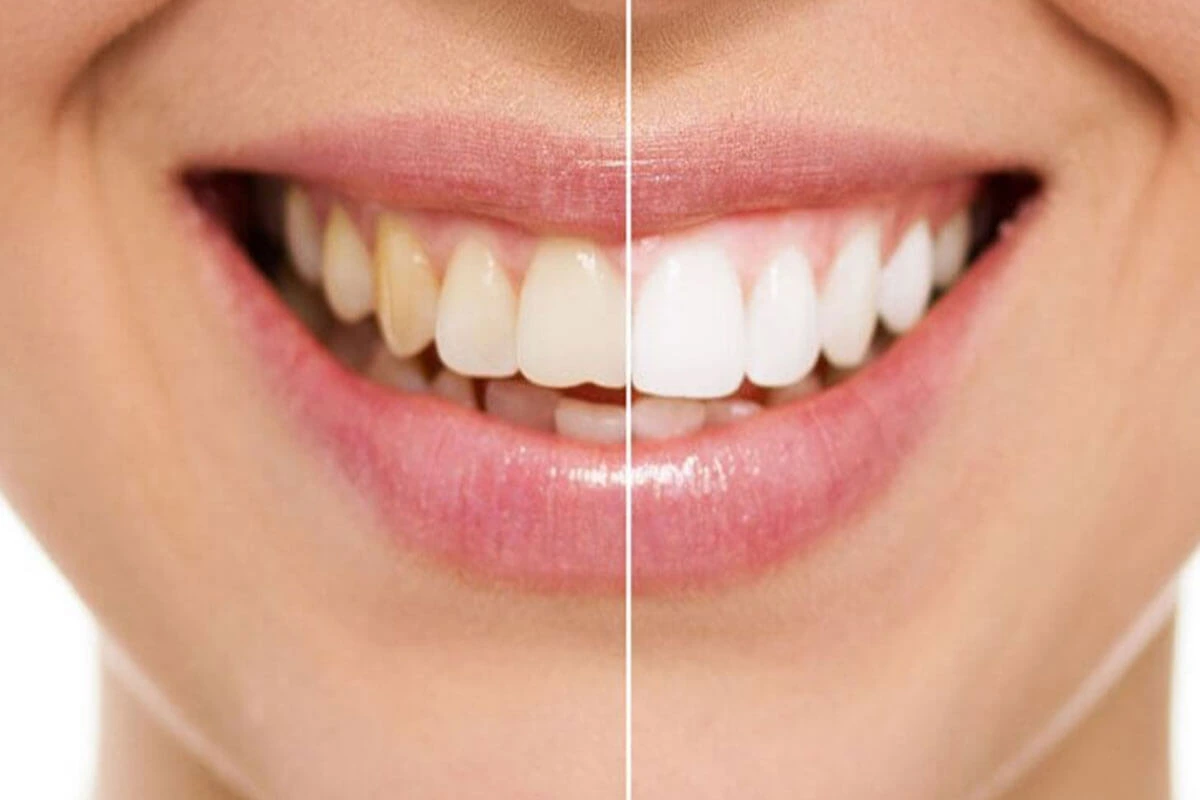You’ve probably seen those whitening strips in the pharmacy aisle and wondered if they actually work. The truth is, they’re one of the most practical ways to brighten your smile without breaking the bank or scheduling multiple dental appointments. These aren’t just another beauty gimmick. They’re a legitimate tool for improving your smile.
What makes whitening strips so appealing is their simplicity. You don’t need special equipment, dental visits, or complicated procedures. Just apply them at home when it’s convenient for you. Whether you’re a busy parent juggling kids’ schedules or a professional with back to back meetings, you can fit whitening into your routine.
The cost factor is huge too. Professional whitening treatments can run hundreds or even thousands of dollars, while whitening strips offer similar results for a fraction of the price. When you combine convenience with affordability and real results, it’s easy to see why so many people choose this approach for brightening their smile.
Why Whitening Strips Actually Work
The science behind whitening strips is pretty straightforward, but understanding it helps you use them more effectively. These strips contain bleaching agents, usually hydrogen peroxide or carbamide peroxide, that break down stains on your tooth enamel. It’s the same basic principle used in professional treatments, just in a more convenient format.
The key is consistent contact between the whitening agent and your teeth. The strips are designed to conform to your tooth shape and stay in place for the recommended time. This allows the active ingredients to penetrate surface stains and lighten the underlying tooth color.
What’s really impressive is how much improvement you can see with regular use. Most people notice changes within a few applications, with full results typically visible after completing a full treatment cycle. The transformation can be quite dramatic, especially if you’re starting with significantly stained teeth.
The effectiveness comes down to following the instructions and being patient with the process. Unlike instant fixes that promise overnight results, whitening strips work gradually to create lasting improvements in your smile’s appearance.
Avoiding the Pitfall of Uneven Results
One of the biggest concerns people have about whitening strips is ending up with patchy, uneven whitening. This is definitely a real risk, but it’s completely preventable when you know what you’re doing. The key is proper application and preparation.
Before you even open the package, make sure your teeth are clean. Brush and floss thoroughly to remove any plaque or debris that could interfere with the whitening agent’s contact with your enamel. This simple step makes a huge difference in achieving even results across all your teeth.
When applying the strips, take your time to position them correctly. Make sure they’re aligned evenly across your teeth without overlapping or bunching up. Pay attention to the edges and smooth out any air bubbles that might prevent proper contact with your tooth surface.
Your oral health plays a bigger role than you might expect. If you have cavities, gum disease, or other dental issues, they can interfere with how the whitening agent works. Getting a dental checkup before starting whitening treatments ensures you’re starting with a healthy foundation for the best possible results.
Managing Sensitivity Like a Pro
Tooth sensitivity is probably the most common side effect of whitening strips, but it doesn’t have to derail your whitening goals. Understanding why it happens and how to prevent it makes all the difference in having a comfortable whitening experience.
The bleaching agents in whitening strips can temporarily make your teeth more sensitive to temperature and pressure. This is normal and usually subsides after you complete the treatment cycle. However, there are smart ways to minimize this discomfort from the start.
Start by following the manufacturer’s recommended wear time exactly. Don’t think that leaving strips on longer will give you faster results. It won’t, and it significantly increases your risk of sensitivity. If the package says 30 minutes, set a timer and stick to it.
Consider using desensitizing products before or after your whitening sessions. Special toothpastes designed for sensitive teeth can help buffer your enamel against the bleaching agents. Some people find that using these products for a week before starting whitening strips prevents sensitivity issues altogether.
Staying Safe With Over the Counter Products
Just because whitening strips are available without a prescription doesn’t mean they’re risk free. Like any product that affects your teeth, they need to be used thoughtfully and with awareness of potential complications. Smart usage prevents problems before they start.
Understanding the key safety considerations helps you make informed decisions about your whitening routine:
- Proper application technique: Avoiding gum contact and ensuring even strip placement to prevent irritation
- Time limits: Never exceeding recommended wear times, even if you want faster results
- Frequency guidelines: Following the suggested treatment schedule rather than using strips daily indefinitely
- Warning signs: Recognizing symptoms like severe sensitivity or gum irritation that indicate you should stop treatment
- Professional consultation: Getting dental guidance before starting, especially if you have existing dental work or oral health issues
These safety measures work together to ensure your whitening experience is both effective and comfortable. The goal is achieving a brighter smile without compromising your oral health or creating new problems that require professional treatment.

Getting Professional Guidance for Better Results
While whitening strips are designed for home use, getting professional input can make your experience much more successful. A dental evaluation before you start helps ensure you’re choosing the right approach for your specific situation and oral health needs.
Your dentist can assess whether whitening strips are appropriate for your type of tooth discoloration and overall dental condition. Some types of stains respond better to professional treatments, while others work great with over the counter options. Getting this guidance upfront saves you time and frustration.
Professional consultation also helps you understand realistic expectations for your results. Factors like your natural tooth color, the type of staining you have, and any existing dental work all influence what you can achieve with whitening strips.
Having professional support throughout the process means you have someone to turn to if you experience sensitivity or other issues. Rather than guessing whether symptoms are normal, you can get expert guidance on whether to continue, modify, or pause your whitening routine.
Making Smart Decisions About Your Whitening Options
Not everyone is a good candidate for whitening strips, and that’s okay. Understanding when strips make sense and when you might need a different approach helps you choose the most effective path to your whitening goals.
The decision often comes down to your specific situation and what you’re trying to achieve. If you have mild to moderate surface staining and healthy teeth, whitening strips can be incredibly effective. They’re perfect for coffee, tea, or wine stains that have built up over time.
However, if you have significant discoloration, dental restorations like crowns or veneers, or underlying dental issues, professional treatment might be more appropriate. Whitening strips won’t change the color of artificial dental materials, which can leave you with uneven results.
Your lifestyle and preferences matter too. Some people prefer the convenience and control of home treatments, while others want the speed and intensity of professional procedures. There’s no wrong choice, just different approaches that work better for different people and situations.
Best Practices for Long Term Success
Getting great results with whitening strips isn’t just about the initial treatment. How you maintain your newly brightened smile determines how long your results last and whether you’ll need touch up treatments down the road.
Maintaining your whitening results requires attention to daily habits and ongoing oral care:
- Oral hygiene consistency: Thorough daily brushing and flossing to prevent new stains from setting in
- Dietary awareness: Limiting stain causing foods and drinks, or rinsing with water after consuming them
- Touch up treatments: Using whitening strips periodically to maintain your desired shade
- Professional cleanings: Regular dental visits to remove surface stains and maintain overall oral health
- Protective habits: Using a straw for dark beverages and avoiding tobacco products that cause heavy staining
These maintenance strategies help extend the life of your whitening results and keep your smile looking its best. The key is finding a routine that fits your lifestyle while protecting your investment in a brighter smile.
Your Path to a Brighter Smile
Whitening strips represent a smart middle ground between expensive professional treatments and ineffective home remedies. When used correctly, they offer genuine results that can transform your smile and boost your confidence in social and professional situations.
The key to success is approaching whitening strips with realistic expectations and proper preparation. This means understanding how they work, following safety guidelines, and being consistent with your treatment routine. It’s not about finding shortcuts, but about using a proven method effectively.
What makes whitening strips particularly valuable is their accessibility. You don’t need to rearrange your schedule, take time off work, or make multiple dental appointments. You can achieve noticeable improvements in your smile’s appearance while maintaining your normal routine.
Remember that a brighter smile is just one aspect of overall oral health. The best whitening results happen when your teeth and gums are healthy to begin with. Combining whitening treatments with excellent oral hygiene and regular dental care gives you the foundation for long lasting results and optimal oral health.
Schedule your consultation Today!
Laguna Heights Dental
30231 Golden Lantern, Ste D
Laguna Niguel, CA 92677
(949) 363-1200
https://lagunaheightsdental.com/
See More Reviews From Laguna Height Dental. View information about local places in our community. Get Driving Directions to Our Practice
Frequently Asked Questions
Can whitening strips really improve my smile significantly?
Absolutely! When used properly, whitening strips can create dramatic improvements in tooth color and overall smile appearance. Most people see noticeable results within a few applications, with full results typically visible after completing the recommended treatment cycle. The key is consistency and following the instructions carefully.
Will using whitening strips cause uncomfortable tooth sensitivity?
Some people do experience temporary sensitivity, but this can be minimized or prevented entirely with the right approach. Use strips exactly as directed without exceeding recommended wear times, consider desensitizing toothpaste before starting treatment, and stop if you experience severe discomfort. Most sensitivity resolves quickly after completing treatment.
Are whitening strips safe for everyone to use?
Whitening strips are generally safe when used as directed, but they’re not appropriate for everyone. People with extensive dental work, severe tooth decay, gum disease, or extremely sensitive teeth should consult with a dentist before starting any whitening treatment. A professional evaluation helps ensure you choose the safest and most effective approach for your specific situation.
Related Articles




